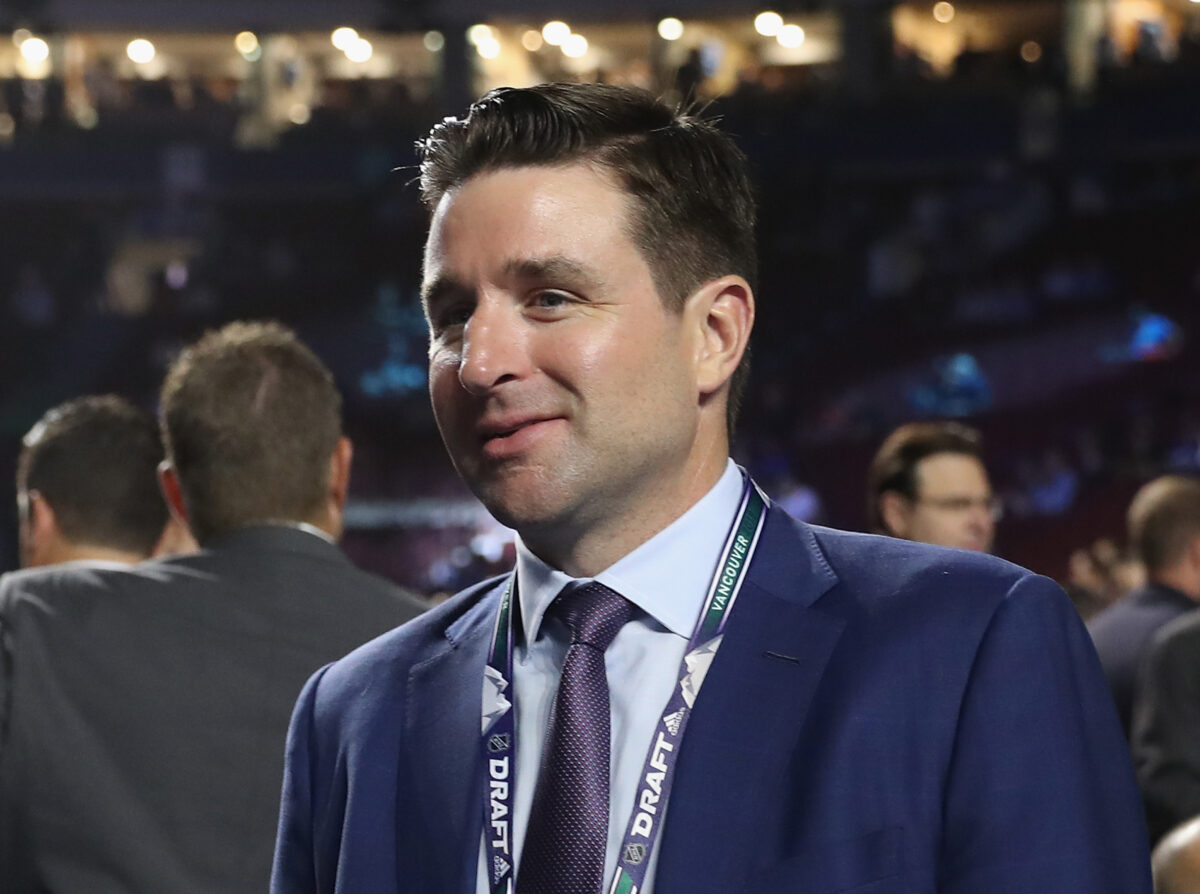The New York Rangers have won their last three games, giving them hope that they’re starting to rediscover the form that allowed them to leap out to an 18-4-1 start to 2023-24 before going 11-12-2 over their next 25 contests, a stretch that raised plenty of questions about the viability of their Stanley Cup hopes.
Even if the club looks prepared to put that mediocre run of results behind it, general manager Chris Drury and the front office should have little doubt about something they already knew: The Rangers need reinforcements, and perhaps well before the trade deadline.
These Blueshirts are a good team, featuring top-end offensive talent, an elite defenseman and strength and depth in goal. Yet their shortcomings are significant.

There’s a gaping hole in the middle of the third line that opened up when center Filip Chytil was lost for the season due to suspected post-concussion symptoms (no disrespect meant to good soldier Jonny Brodzinski, who scored his third goal of the season in a 3-1 win over the Tampa Bay Lightning on Feb. 7). The right side of the forward corps continues to be unsettled and not nearly productive enough, nearly three years after the trade of Pavel Buchnevich. There’s not enough size or speed, and the bottom six doesn’t deliver enough on a consistent basis.
All of that can be viewed as a negative, or it can be seen positively, given that the Rangers sit atop the Metropolitan Division despite their considerable needs. No matter how one looks at it, there’s no question Drury has to upgrade – and he shouldn’t wait until just before the March 8 deadline to do it.
Rangers’ Potential Trade Targets at Center Are Coming Off the Board
The reasons for acting quickly are myriad, and perhaps the most important one is this: Clubs with whom the Rangers are competing for mid-season acquisitions are already doing so. On Jan. 31, the Vancouver Canucks beat out the Rangers for Calgary Flames center Elias Lindholm, with Calgary choosing Vancouver’s trade offer over that of the Blueshirts for perhaps the top rental property on the market.
Three days later, the Winnipeg Jets took the initiative and grabbed Montreal Canadiens pivot Sean Monahan, sending a 2024 first-round draft pick to the Habs.

While the Rangers weren’t in on Monahan and weren’t likely to surrender a first-rounder for him, his trade to the Jets will only increase the level of demand for the other potentially available centers who can fill Chytil’s spot for the rest of the season. Of all the moves the Rangers can make, this is the one that looks like a clear requirement. Those remaining include the Anaheim Ducks’ Adam Henrique, the Seattle Kraken’s Alexander Wennberg, Jack Roslovic of the Columbus Blue Jackets and perhaps old friend Kevin Hayes from the St. Louis Blues.
While the 3C spot is the most pressing need on this roster, the Rangers will of course also be competing for wingers who play with snarl, scorers who can slot into the top six and perhaps a big, crease-clearing defenseman. It’s doubtful Drury can acquire all of those elements, but starting early will give him the best chance to come close.
It’s clear that the Blueshirts GM understands a new reality in the NHL: The old way of waiting out trading partners, often until the final moments before the deadline, has been shifting. Once again, teams are jumping the market to get what they need, regardless if the cost is higher as a result. The quick moves by the Canucks and Jets to bolster their center corps, in fact, might indicate a wholly new viewpoint on adding players at midseason: If you want someone, go get them and pay more rather than lose out altogether, regardless of the date.
Drury, in fact, proceeded in just this manner last year. Knowing he was going to surrender one of his two first-rounders in any deal, he obtained winger Vladimir Tarasenko and defenseman Niko Mikkola from the Blues on Feb. 9, 2023 – more than three weeks before the deadline. Drury also didn’t wait to the end in his pursuit of Patrick Kane that ended Feb. 28, adding the right wing from the Chicago Blackhawks with three days to spare before the trade season closed.

Another big reason to act fast? The Rangers need help now, not in a month. The 2022-23 team had considerable needs, some of which remain this season, and Drury’s early start came as a surprise and permitted him to get ahead of almost every playoff contender (the New York Islanders traded for center Bo Horvat on Jan. 30 of last year, but the Blueshirts weren’t interested in him).
Acting Fast Would Give New Rangers More Time to Integrate
Exploring the market now, and being willing to once again pull the trigger on a deal if it materializes early, is surely front and center (pun intended) on Drury’s mind. As well as the Rangers have played overall, they’re still just seven points clear of the playoff cutline in a wide-open Eastern Conference race.
So the chance to bring in a Henrique, a Hayes or a Wennberg to help get the third line going, a winger like Tarasenko (again) or another forward with size, or Henrique’s teammate and former Ranger Frank Vatrano to add speed and scoring, shouldn’t be dependent on timing. If teams are ready to deal, and Drury is ready to move, he should do so as quickly as possible, not wait for the deadline.
Related: 3 Non-Rental Trade Options The Rangers Could Consider
That also gives a reshaped roster more time to jell, which in Tarasenko’s case was needed last season as he initially struggled to adapt to leaving the only NHL team he’d ever known, before gradually adjusting to a new system and finding a comfort level in New York going into the playoffs. It also means that the Rangers play with a better roster for longer, in theory improving their chances for a higher seed in the tournament.

The Blueshirts’ potential as Cup contenders is being held back by the missing elements which will have to be addressed sooner or later. Waiting around to do so doesn’t make sense in the current NHL landscape. Drury didn’t sit back last year when he picked up Tarasenko, Mikkola and Kane ahead of the deadline, and he was apparently ready to move expeditiously again this season with his run at Lindholm.
If more of what could reinforce Drury’s win-now team become available, short of a ridiculous overpay, it behooves him to improve not just his team’s chances three months from now, but immediately. That would guarantee the Blueshirts don’t miss out on who they want, and would give new players more runway to integrate and a changed – and deeper – club additional time to find its stride. The Rangers’ playoff fortunes might just hinge on what they do in February, not what they do with minutes to spare when March 8 rolls around.
